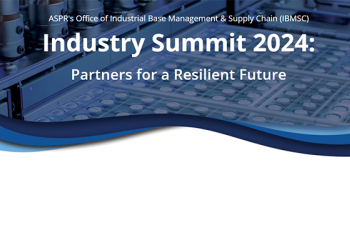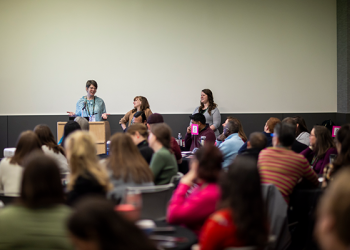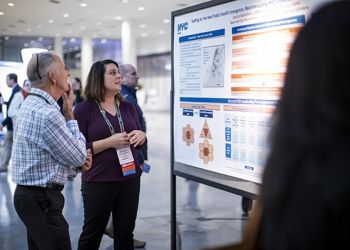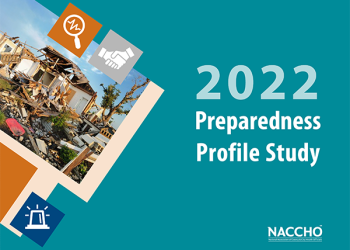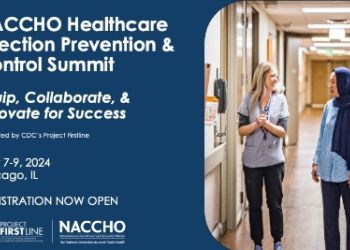The second day of the 2024 Preparedness Summit opened in Cleveland, Ohio with remarks by Elizabeth Goodwin, Northern Ohio Regional Liaison, Office of Ohio Governor Mike DeWine. Goodwin shared how emergencies in Ohio and in communities across the country remind us of the sacrifices made by those in attendance to keep residents safe. She remarked on the timeliness of the conference’s theme and provided examples of cross-sector collaborations in Ohio.
The morning plenary, Let’s Talk about ICS: Integrating Public Health, Healthcare, and Emergency Management Response Frameworks, was moderated by Dr. Umair Shah, Secretary of Health for the state of Washington, Washington State Department of Health.

Shah opened with a brief history of major responses in recent U.S. history, and the origins of the Incident Command System (ICS), which is an “organizational structure for incident management that integrates and coordinates a combination of procedures, personnel, equipment, facilities, and communications to be effective.”
Jonathan Greene, Deputy Assistant Secretary, Director of the Office of Response, U.S. Department of Health and Human Services, Administration for Strategic Preparedness and Response, shared that no one disagrees that we need a way to coordinate activities and identify priorities—“ICS gives us the ability to organize activities.” He noted the importance of those involved in response understanding how ICS works so that they can plug in appropriately. He also spoke to the need to overcome silos to bring the full expertise of agencies to the forefront during emergencies.
Dr. Henry Walke, Director of the Office of Readiness and Response, Centers for Disease Control and Prevention (CDC), talked about the evolution of ICS at CDC across responses and the culture change that has resulted as the agency works to be as efficient as possible. He also discussed the importance of coordination within the interagency and White House, and the degree to which the agency needs to support states, locals, tribes, and territories during a response.
Michael Wargo, Vice President at Enterprise Emergency Operations & CSG Medical Transport, HCA Healthcare, shared that, at the core, we need to have a system that’s adaptable and has transparent communications. He noted the need for healthcare and public health to see the services they provide the community as one and to understand how all the components can work together to align priorities.
Brittney Roy, Program Director of Public Health, National Governor’s Association, described the complex needs that must be balanced at the state level and the importance of viewing systems with a public health lens to see intersections and align priorities accordingly. She shared that, during a response, it’s critical to view community wellness beyond the scope of infectious disease to more fully encompass elements of health influenced by economic factors and chronic conditions. She also offered insights into how the public health workforce connects with economic and educational opportunities.
Shaun E. Allen, Chief, Operations Capabilities Branch, Federal Emergency Management Agency, talked about the importance of ICS to coordination efforts and its ability to give those involved in response a common language by which to communicate. He stressed the importance of not just learning the ICS framework, but of training on and practicing it. Allen noted that, “the more you use it, the more efficient you will be.” He also remarked that politics will always be a part of disaster response and that being flexible and modular helps you adapt to conditions.
Of note, discussion of ICS and its impact in COVID-19 response was the topic of two papers in the Health Security supplement published in October 2023, following listening sessions at the 2022 Preparedness Summit. The following papers are available online: “Reimagining Incident Management Systems for Public Health Responses” and “Public Health Emergency Preparedness and Response After COVID-19.”
Additional Highlights from Day Two
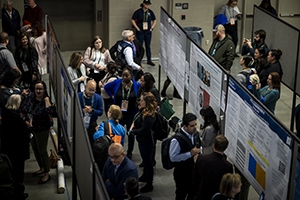
The day included over 50 demonstrations, learning sessions, partnership case studies, and workshops. Over lunch in the Exhibit Hall, participants had the opportunity to learn from and interact with nearly 50 posters and their presenters. For the first time, students were among those presenting posters.
Later in the afternoon, attendees convened in four Town Hall sessions exploring the topics of:
- Aligning Industry and Public Health for a Resilient Supply Chain
- Looking at the Present and into the Future: How Wastewater Surveillance Can Serve as an Innovative Early-Warning Tool for Disease Detection
- Merging Missions: Partnerships to Protect the Public’s Health
- The Next Generation of CDC’s Public Health Emergency Preparedness (PHEP) Program
Click here to see photos from the day.



